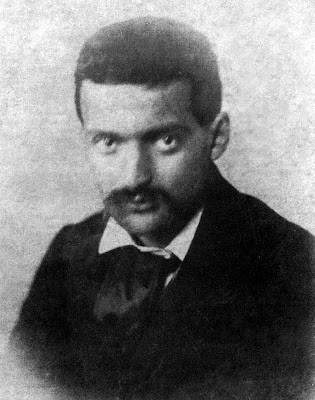Frederick Douglass:—It is not known just when this remarkable man was born; but he supposes it was in February, 1817, in the village of Tuckahoc, Maryland.
His mother's name was Harriet Bailey, and he remembers that she was the only black person in the village who could read; he also recollects that she was quite black and glossy; and as he is many shades lighter, his father must have been a white man. Frederick had an older brother named Perry, and four sisters. His mother, as if anticipating his future career of greatness,gave him a name in keeping with it; she called him Frederick Augustus Washington Bailey; but after his escape, wishing to conceal his identity, he took the name he has since borne.
The Negroes on his master's plantation received the usual cruelty accorded slaves in Maryland at this time. Many were the floggings the boy witnessed, which brought blood from the backs of the victim of an overseer's lash.
However, there were a few bright spots in his plantation life to which he could look back with pleasure.
His master's daughter, Mrs. Thomas Auld, called by the slaves "Miss Lucretia," treated him with great kindness; indeed he became quite a pet with her, and often when hungry, his usual condition, would sing under her window, receiving for his pay a slice of bread and butter. When struck on the forehead by another slave boy, she it was who dressed his bleeding wound.
 | The white side of a black subject: enlarged and brought down to date. : a vindication of the Afro-American race : from the landing of slaves at St. Augustine, Author Norman B. Wood. Publisher: American Publishing House, 1897.
Original from: the University of Wisconsin - Madison. Digitized: Jun 19, 2009. Length: 408 pages. Subjects: African Americans. Slavery, Social Science / Ethnic Studies / African American Studies, Social Science / Slavery
This image (or other media file) is in the public domain because its copyright has expired.
This applies to the United States, where Works published prior to 1978 were copyright protected for a maximum of 75 years. See Circular 1 "COPYRIGHT BASICS" PDF. Works published before 1923, in this case 1897, are now in the public domain.
|
After this, he was sent by his master to Baltimore, where his new mistress, the wife of Hugh Auld, was very kind to him, and began teaching him to read; but was prevented by her husband, who said in the presence of the boy, that "learning would ruin any nigger" and if Fred was taught to read the Bible it would be impossible to keep him a slave. The words of his master were treasured up by our young hero, who resolved at all hazards to get learning.and with all his getting to "get understanding."
He always carried a Webster's spelling book in his pocket,and induced his little white playmates to give him instructions. He turned bootblack, and earned fifty cents with which he bought a "Columbian Orator, "and read with such avidity he might be said to have devoured it.
In 1834 Frederick's master hired him to one Covey, a prominent Methodist in the same county, who talked religion on Sunday to his slaves, and prayed before them morning and evening; but his treatment of them was not in keeping with his profession. When he had been there but a few days, Covey sent him with a yoke of unruly oxen to draw in wood from the forest. This would have been a difficult task for an experienced ox driver; but our hero had never driven oxen before, and as might have been expected, they became unmanageable, tangling themselves and the cart, until it was hard work releasing them; however, this was finally accomplished, and with his load on he started to the house; but the oxen ran away even with the load on the cartjbreaking the gate to pieces, they almost crushed the driver between the wheel and the gate-post.
He did not reach the house until late noon, but Covey at once ordered him back for a second load; and following after saw what had been done. He now cut three black gum sprouts, noted for their toughness, from four to six feet long; tearing off Frederick's clothes,he were them out on his bare back, one at a time, and his coarse shirt kept the sores rubbed and open for weeks. On another occasion during a hot afternoon in August, Frederick was taken deathly sick while cairying wheat to a fan. Covey saw him lying on the ground,and with a brutal kick in the side, ordered him to rise; he made an effort and fell back, but a second heavy kick brought him to his feet, only to fall helpless on attempting to pick up the tub of wheat and chaff. Upon which Covey struck him over the head with a stick, causing the blood to gush out, saying,"I will cure your headache." His victim was still too weak to rise.and was left bleeding in a fence corner.
The flow of blood relieved his dizziness, and he determined to go and complain to his master; seeking a iroment when Covey's back was turned, he crept into the woods, where,after resting a while,he made his way almost exhausted to St. Michaels, and reported to Captain Auld, only to be sent back the next day. He did not present himself before Covey until Sunday morning, having spent Saturday night with a slave named Sanday and his wife, who gave him food and ministered to his wants. Brother Covey received him kindly, for it was the Sabbath,and the good man (?) was just starting to church.
He attempted to whip Fred once more after this, but the worm turned on him. The slave had noticed, "men are whipped oftenest who are whipped easiest." He determined to resist, and did so with such success that he drew blood from Covey without losing a drop himself.
He never attempted to whip him afterwards. He was a slave four years longer, but was never again whipped, for whenever it was attempted he always gave as good as he received, sometimes better.











































